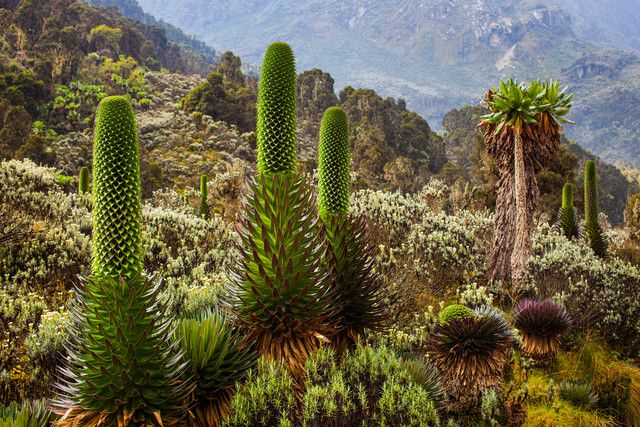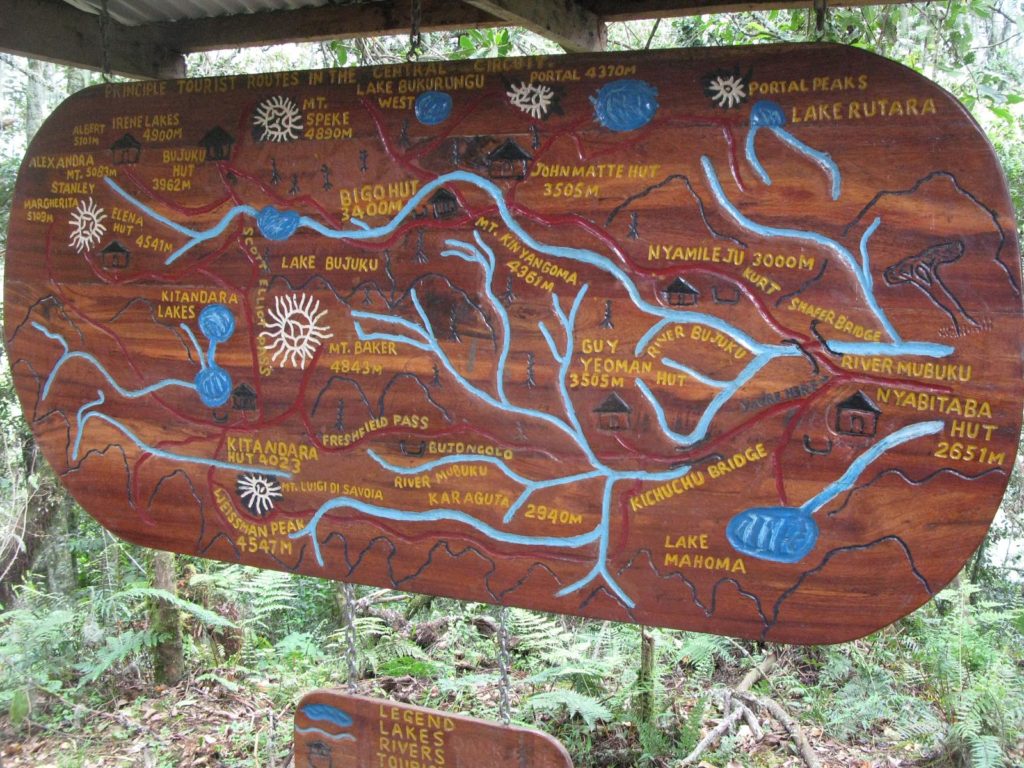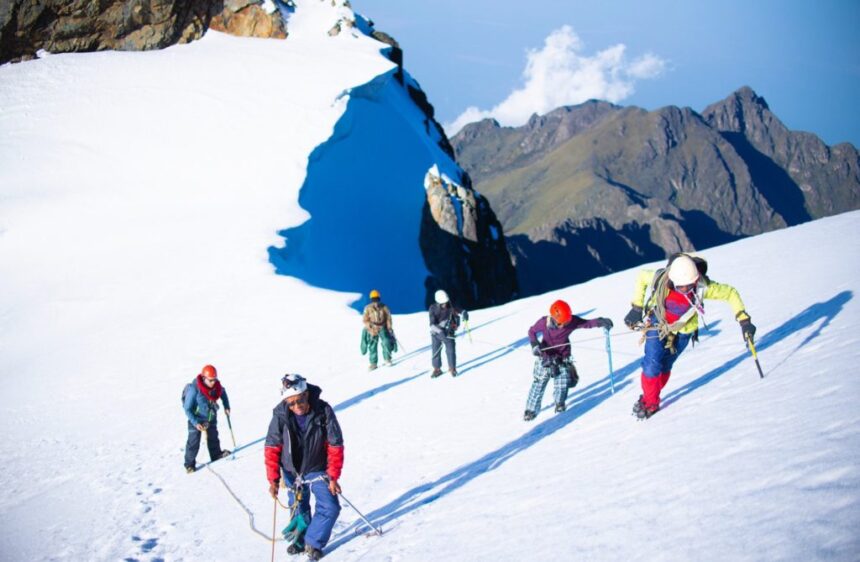RWENZORI MOUNTAINS – Mountains of Mystery
Often referred to as the “Mountains of the Moon”, the towering Rwenzori Mountains are a UNESCO World Heritage site that runs along the Congolese border between the hot floor of the Semliki Valley, and in the backdrop is the Queen Elizabeth National park. The top slopes of the Rwenzori Mountains consist of bare black rocks, Moorland with giant lobelias and groundsels, and the lower altitudes constitute tangled jungles inhabited by forest elephants, chimpanzees (not commonly seen), monkeys, and different alpine bird species. The mountain stands at 5109m with permanent Equatorial snow and ice.
The mountain is a popular and most challenging hiking destination in Uganda. It has multiple rivers and the famous ones being Mubuku and Nyamwamba rivers. Nyamwamba River has always destructed and flooded the town on Kasese and the slopes in the valley. It has brought some of the most important things like clinics, schools, and Kilembe mines to disuse.
The mountain is served by two hiking trails that offer experienced hikers a trip to the glacial peak Margherita which is the highest. The mountain may be less iconic compared to Kilimanjaro and Mt. Kenya in the neighboring countries of Tanzania and Kenya respectively but it offers a more wilderness experience and is more affordable. It is one of the loveliest parts of Uganda’s western safari circuit and some locals don’t believe there is snow at the top of it.
The Rwenzori Mountains were gazetted as a national park in 1991, to make the 996sqkm Rwenzori Mountains a national park that protects glaciers, waterfalls, and lakes to form one of Africa’s most rich Alpine Areas. The park has rich species and unusual flora that led to its inscription as a world heritage site in 1994 to be one of the only three that are in Uganda. The other two are Bwindi Impenetrable national park and Kasubi Tombs.

Just like any other vegetation of an East African Mountain, the vegetation of Rwenzori is divided into altitudinal zones that start from 1800m, where most of the animals are because of the forest. Above 2500m, the forests below give way to the dense bamboo forest, and higher from 3000m to 4500, it is open vegetation of alpine zone, heath, and moorland. It is made of striking Giant Lobelia and groundsel common above 3880m. The fauna here includes 70 mammals, 177 bird species, and there is also the Angola Colobus monkey that has been recorded and reptiles like the Rwenzori three-horned Chameleon that is endemic to the mountains.
Hiking Routes

Two main routes traverse from the lower slopes to the highest point. The longer southern circuit, that starts near Kilembe and ascends to the peak via the Nyamwamba Valley. This is operated by Rwenzori trekking services. The central route ascends from Nyakalengija via Mubuku and Bujuku Valleys and is operated by Rwenzori Mountaineering Services.
Visitors can choose from a 1-9 days hike depending on their time. There is a trail that was opened in 2012- The Lake Mahoma Day Trail. This is a shorter and more wildlife-oriented trail that is part of the central circuit. It is about 8 hours of a reasonable and gentle climb to an altitude of about 2088m. It can be done in a day or 3 days, 2 days climbing and 1 day going down.
Climbing the mountain is not an easy task, the paths can be rough, rocky, steep, cold and wet, misty, and at times muddy. It has repelled numerous expeditions and others have braved everything and reached the top. If you are not reasonably fit, or have heart or lung problems, always declare them before the start. You should be aware of mountain health issues like Altitudinal illness and Hypothermia. But there is always a rescue team to help.
Clothing and Equipment
The mountains are common with wet and sub-zero temperatures which are normal here, you just need to be prepared when you attempt to climb the mountain. You need to carry plenty of warm clothing, a decent rain jacket because rain here is expected any day even in the dry season, trousers, stockings, gloves, plastic bags to help keep wet and dirty clothes, hiking shoes, and gumboots.
For the case of climbing shoes, ropes, ice axes, harnesses, walking sticks, you can hire operators. Meals and accommodation along the trail, are provided but you can carry your snacks like chocolate bars, nuts, etc.

